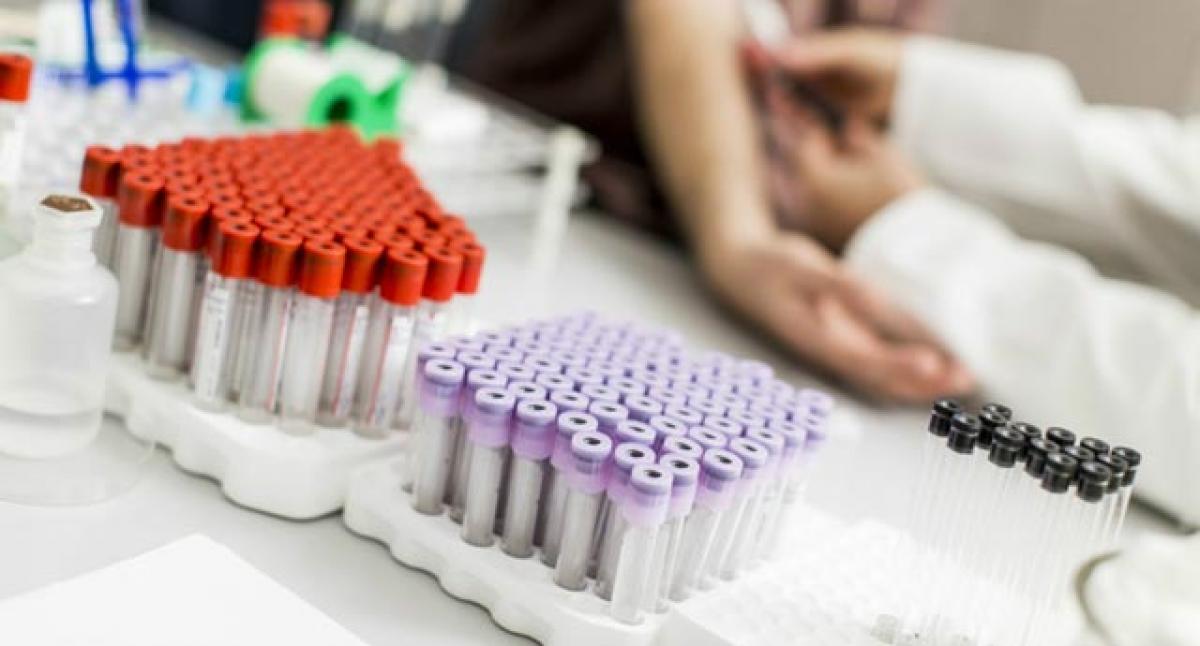Live
- Three persons admitted to hospital for diarrhea treatment
- First Star Outside Milky Way Captured: WOH G64 is 2,000 Times Larger Than the Sun
- Sikkim govt to constitute state Niti Ayog: CM Tamang
- CBI books Rajasthan narcotics inspector for Rs 3 lakh bribe
- Rajasthan bypolls: A tough contest between BJP and Congress
- Albania joins SEPA, paving way for EU integration
- Japanese government approves 250-billion USD economic package to ease price pain
- Six pharma companies to set up their units in Telangana
- The Unstable Events of a 17-Wicket Day in Perth: India vs Australia
- Dutch FM's Israel trip cancelled after Netanyahu's arrest warrant
Just In

SRL Diagnostics, a leading diagnostic chain in India, has released a 3 year long 2013-2015 data mining survey on Celiac disease at a pan India level.
SRL Diagnostics, a leading diagnostic chain in India, has released a 3 year long 2013-2015 data mining survey on Celiac disease at a pan India level. The data reveals that there has been an increment in the number of samples received for testing at SRL by 26 per cent in the last 3 years. Of the total number of samples received for testing, 18 per cent were found to be abnormal. Celiac disease is slightly more common in Indian males (20 per cent) than females (17 per cent).
Celiac disease (CD) -a chronic immune-mediated inflammation of our gut, is triggered by exposure to gluten (found in wheat, barley, rye, oat, spelt and malt) in food items. It is a condition in which gluten damages the intestines and reduces its ability to absorb food.It affects 1% of the population in many regions of the world. The prevalence of this disease is found in patients with family history of CD or a personal history of autoimmune disease, including that of thyroid, liver, or type 1 diabetes mellitus.
However a pre-requisite for Celiac Disease is Gluten Sensitivity. At an early stage the disease remains as Non-Celiac Gluten Sensitivity, but if not taken care of, slowly progresses to overt Celiac Disease. Distribution of abnormal celiac disease results – Zone wise Analysis from SRL Northern Zone had highest percentage of abnormality with 20 per cent followed by western Zone with 17 per cent. Among the zones, southern and eastern India showed the lowest percentage of abnormality with 8 per cent and 15 per cent respectively.
Dr Deepa Dave, Director, lab operations “There is a significant need for reaching out and making people aware of the causes, symptoms, treatment and importance of testing for celiac disease. SRL Diagnostics’ in-house data analysis on celiac tests assesses the nationwide abnormalities in test results in both the genders residing in various cities representing diverse geographic origin, occupation, and socio-economic status and food habits.”
She further added “The population in North India showed a higher frequency (20 per cent) of positive test reports for Celiac Disease than in any other zones. This can be due to high consumption of gluten-rich food by the people residing in this zone. South Indian population seems to be the least affected by gluten sensitivity (8 per cent) and this observation correlates well with their diet, which is rice based. “
As per SRL’s analysis of the positive samples, children in the 0 to 10 years age group were seen to be the most affected in all four zones of India. Although Celiac Disease can be confirmed through an endoscopic biopsy taken from the gut, serologic tests in CD should be done as a first step in individuals with symptoms suggestive of CD.

© 2024 Hyderabad Media House Limited/The Hans India. All rights reserved. Powered by hocalwire.com







